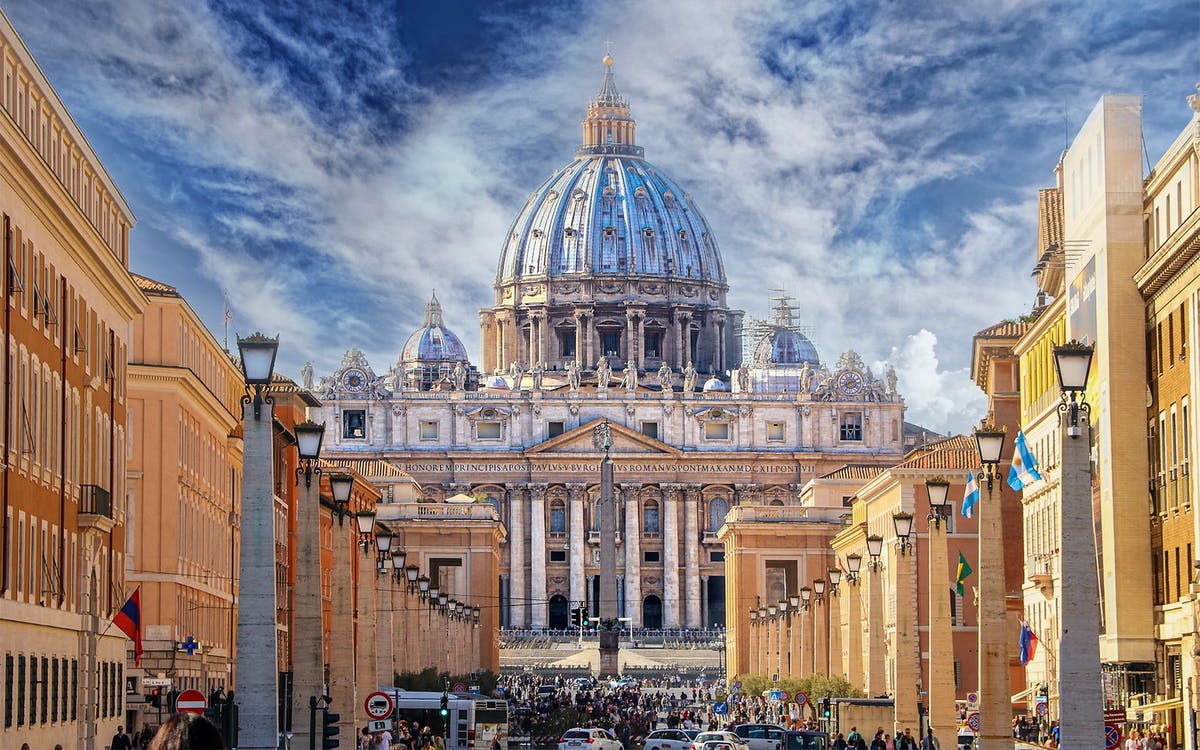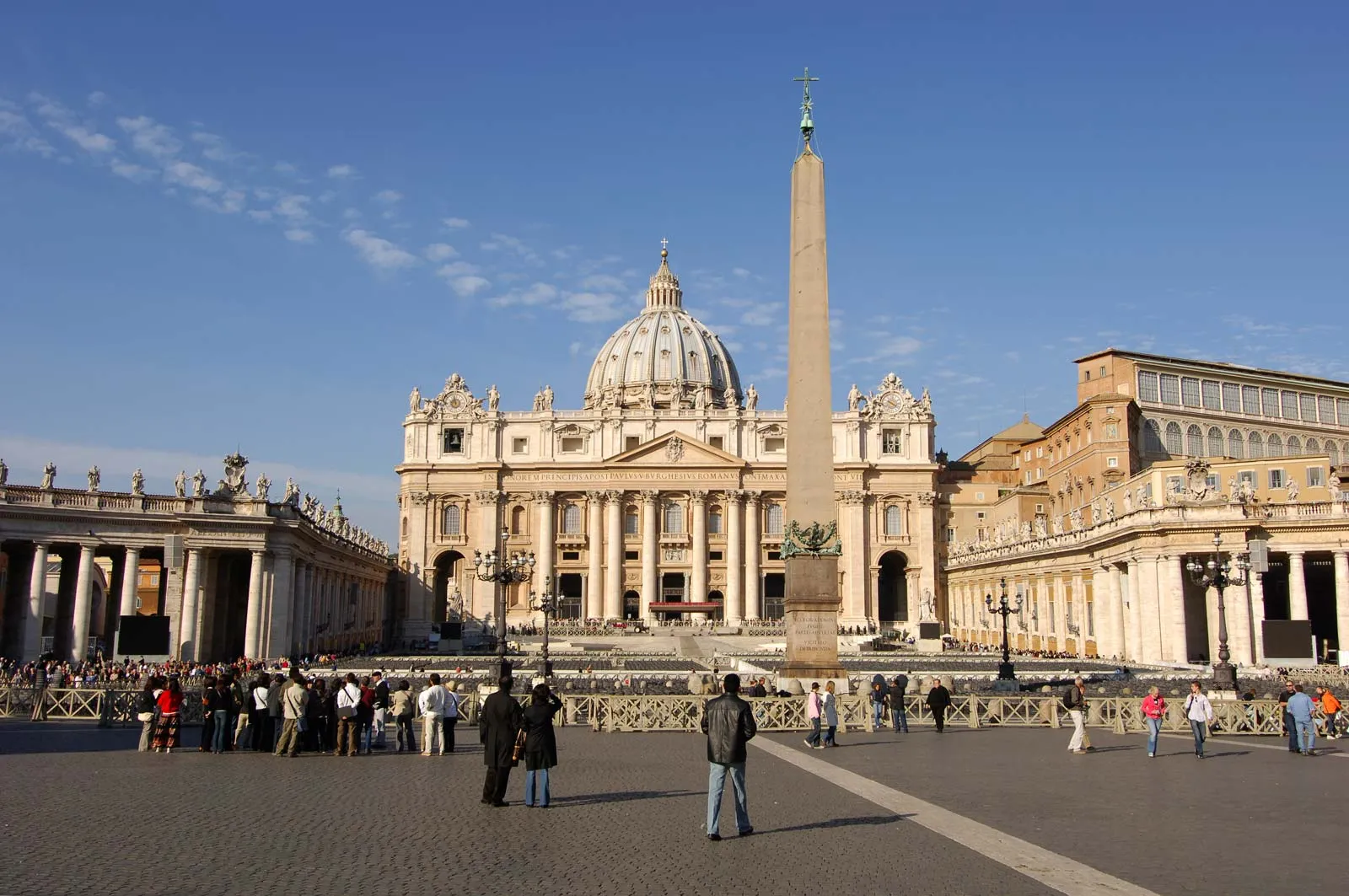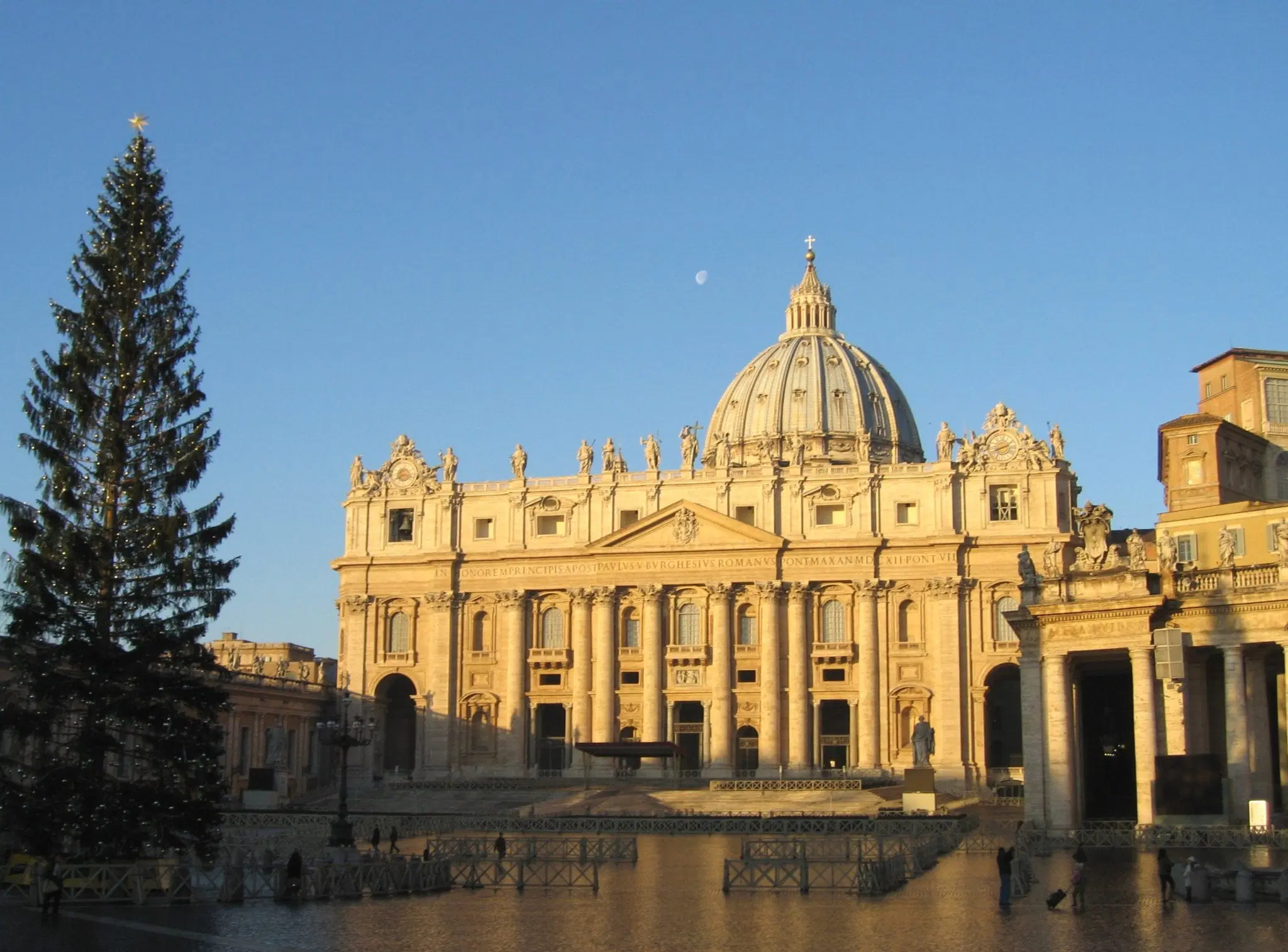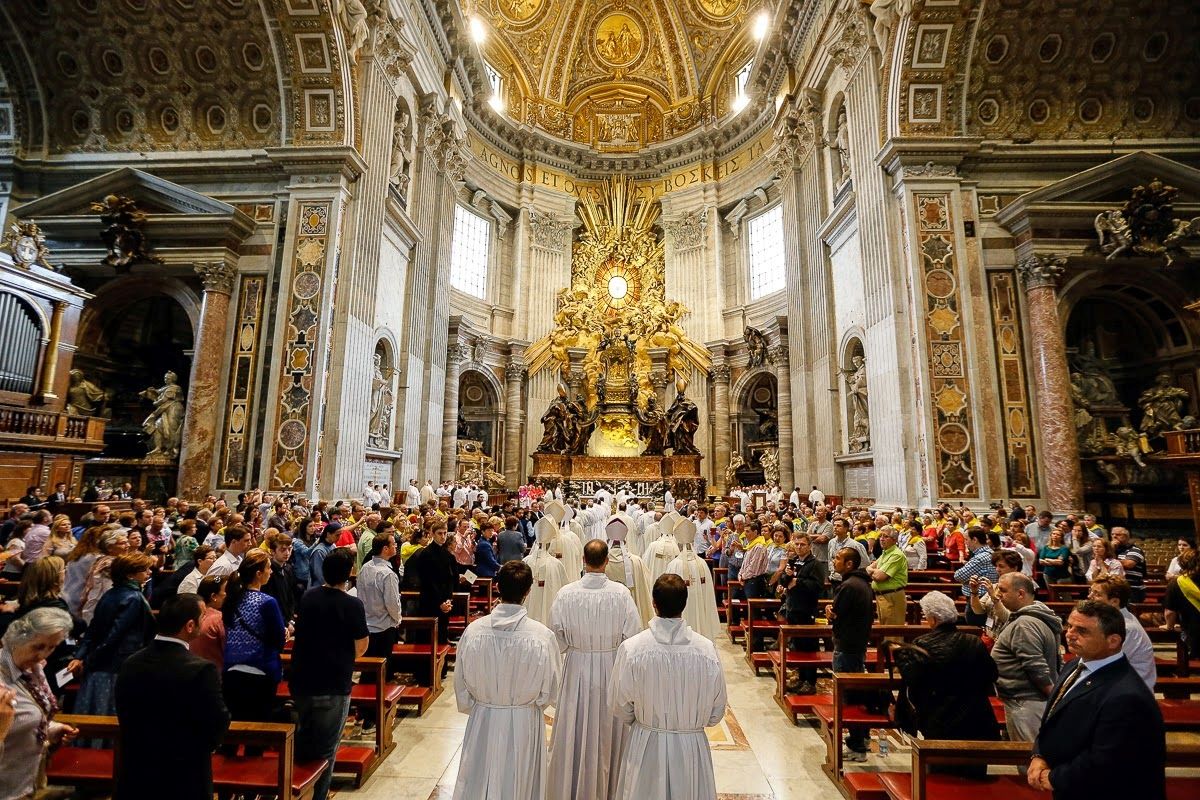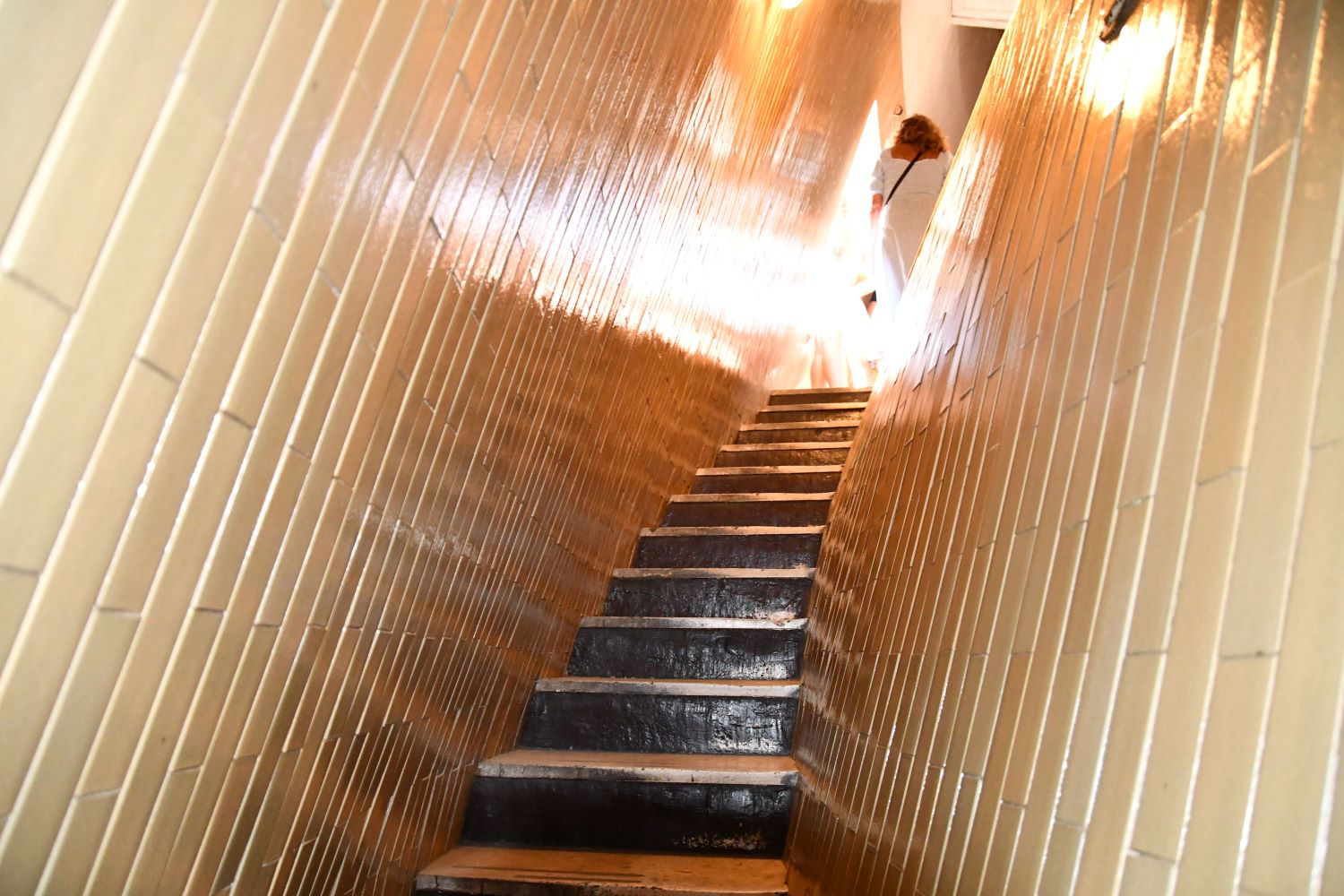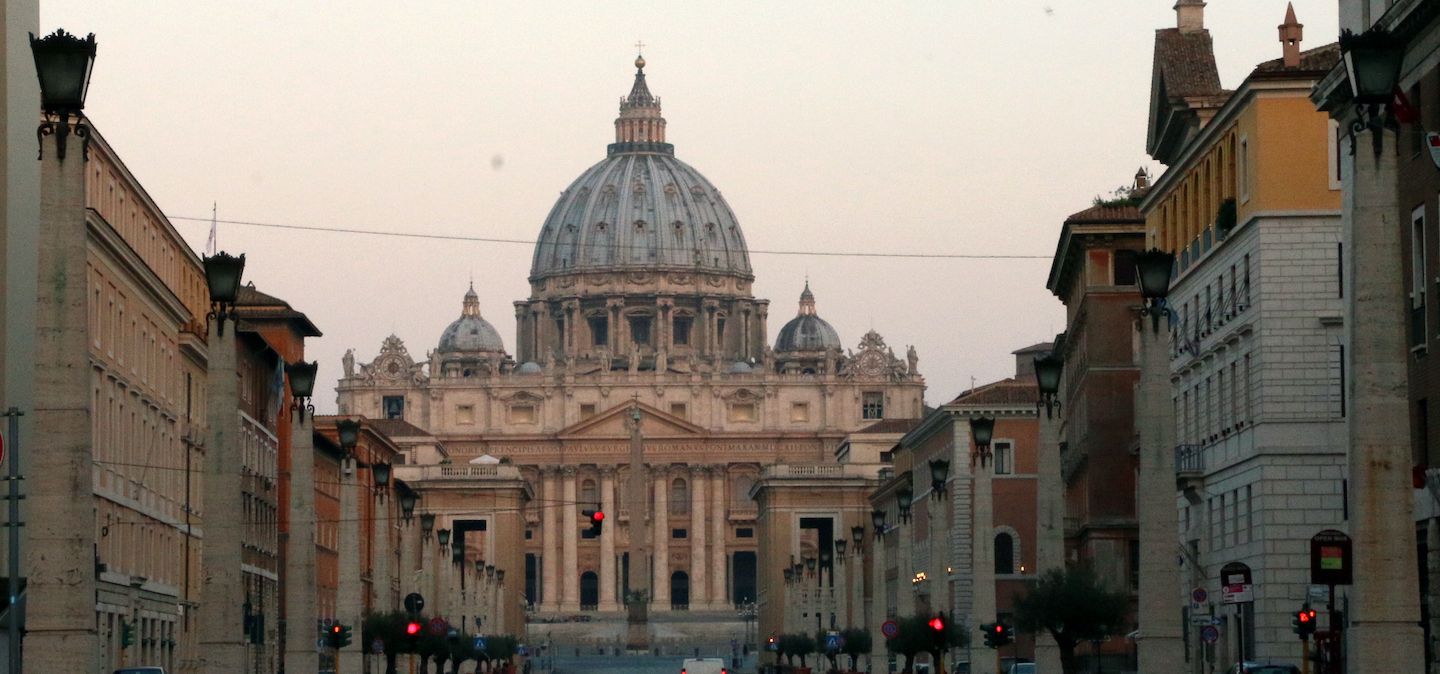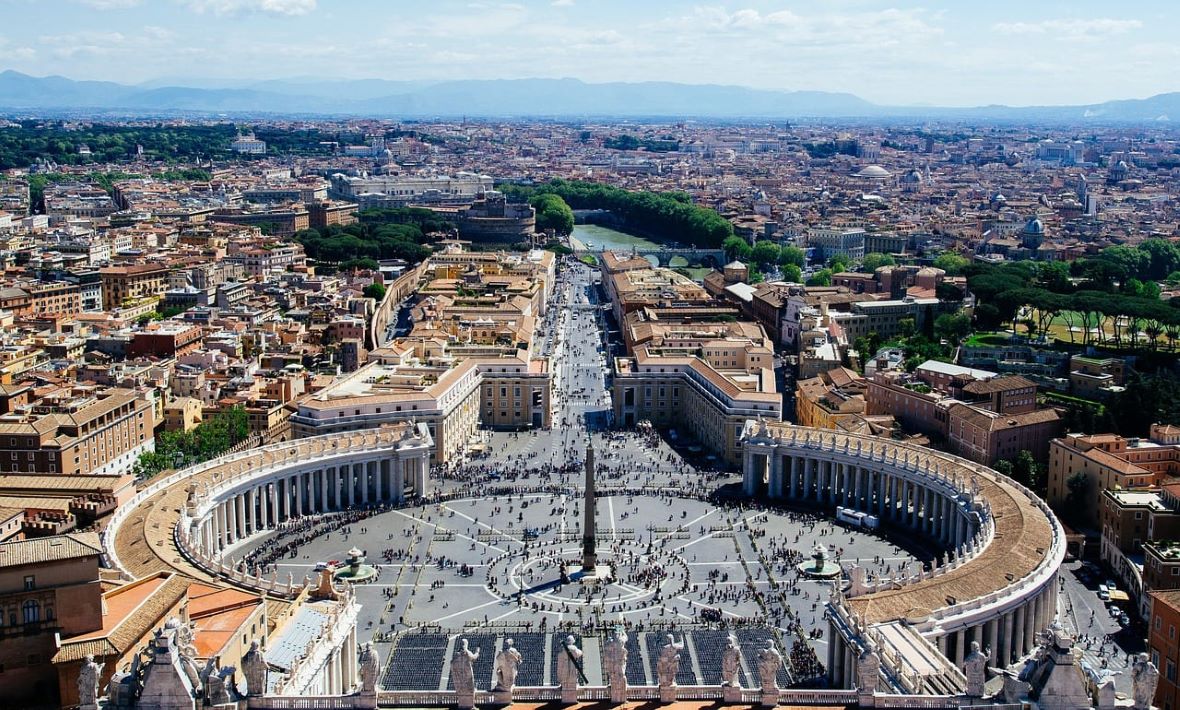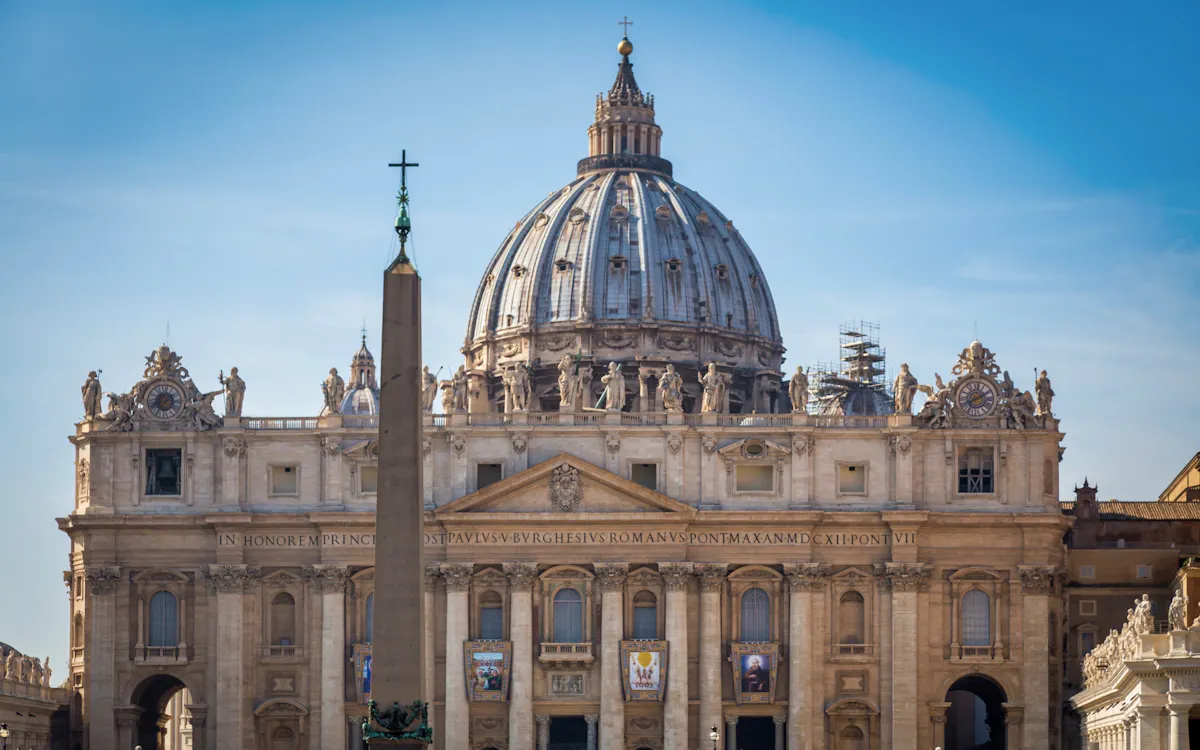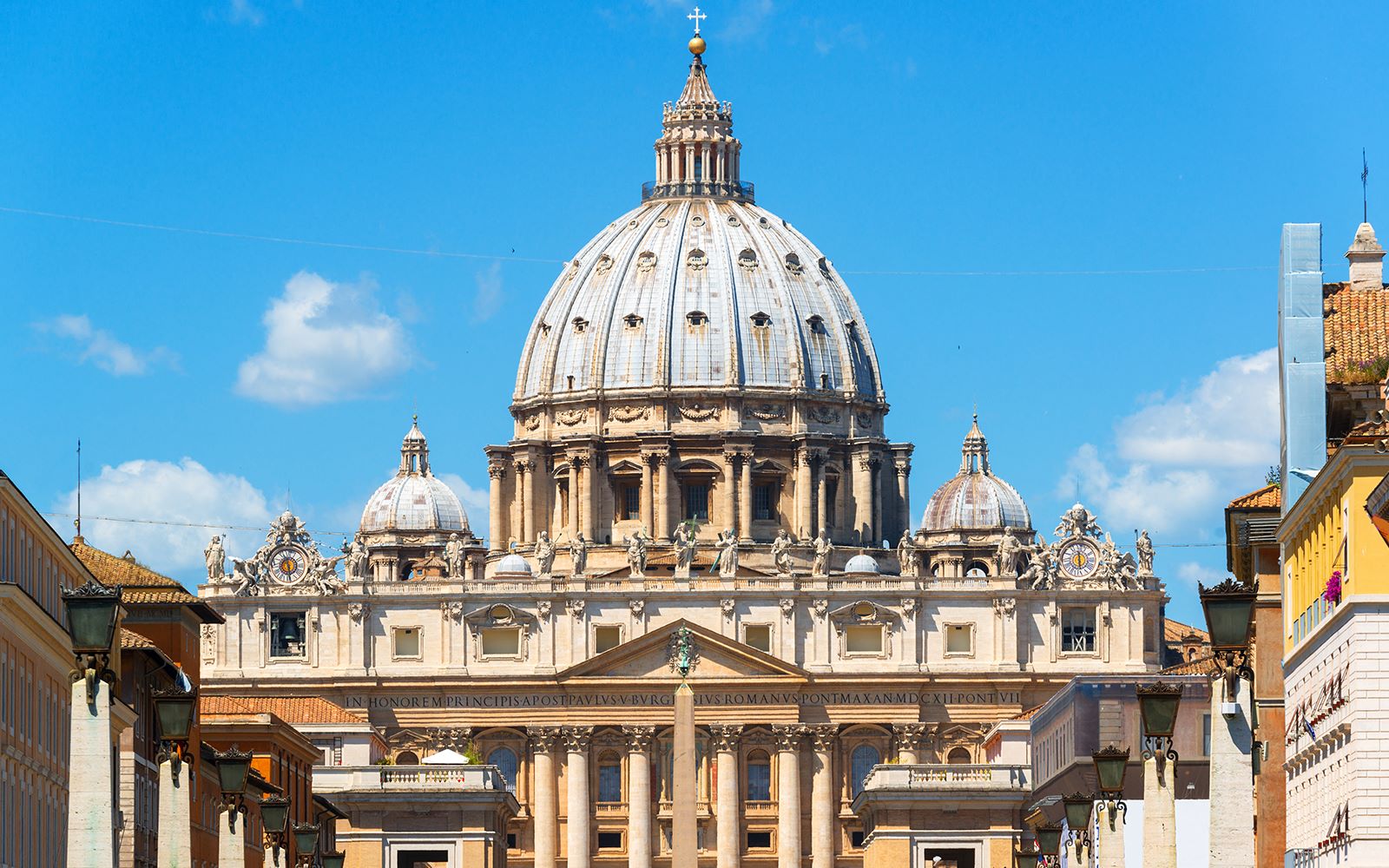Home>Arts and Culture>What Does St. Peter’s Basilica Look Like


Arts and Culture
What Does St. Peter’s Basilica Look Like
Published: February 10, 2024
Peter Smith, Editorial Director at Christian.net, combines deep insights into faith, politics, and culture to lead content creation that resonates widely. Awarded for his contributions to religious discourse, he previously headed a major organization for religious communicators, enhancing dialogue on faith's societal impacts.
Discover the awe-inspiring beauty of St. Peter's Basilica and its rich artistic and cultural significance. Explore the art and culture of this iconic landmark.
(Many of the links in this article redirect to a specific reviewed product. Your purchase of these products through affiliate links helps to generate commission for Christian.net, at no extra cost. Learn more)
Table of Contents
Introduction
St. Peter's Basilica, an architectural masterpiece nestled in the heart of Vatican City, stands as a testament to the grandeur of Renaissance art and the enduring legacy of Christianity. This iconic structure, dedicated to St. Peter, the first pope and one of the twelve apostles of Jesus, serves as a symbol of the Catholic faith and a beacon of artistic and architectural brilliance.
As one approaches the basilica, its imposing presence commands attention, drawing visitors from around the globe to marvel at its awe-inspiring beauty. The history of St. Peter's Basilica is as rich and captivating as its ornate design, with each facet of its construction and adornment reflecting the cultural and religious significance it holds.
From the intricate details of its exterior to the resplendent grandeur within, St. Peter's Basilica offers a profound journey through time and faith. This article delves into the captivating features of this architectural wonder, guiding readers through its exterior and interior, up to the magnificent dome, and out to the iconic St. Peter's Square. Let's embark on a virtual exploration of St. Peter's Basilica, where history, art, and spirituality converge in a harmonious symphony of human achievement.
Read more: What Country Is St. Peter’s Basilica In
Exterior of St. Peter's Basilica
The exterior of St. Peter's Basilica is a breathtaking display of architectural magnificence, captivating visitors with its grandeur and intricate details. As one approaches the basilica, the colossal facade, adorned with colossal columns and majestic statues, commands attention and reverence. The central balcony, known as the Loggia of Benedictions, is where the Pope delivers his Urbi et Orbi blessing on special occasions, adding to the spiritual significance of the exterior.
The facade, designed by Carlo Maderno in the early 17th century, exudes a harmonious blend of Renaissance and Baroque styles, characterized by its imposing presence and ornate embellishments. The colossal Corinthian columns, each standing over 13 meters tall, flank the central balcony, creating a sense of grandeur and symmetry. The intricate details of the facade, including the richly sculpted reliefs and statues, depict biblical scenes and saints, adding a layer of religious symbolism to the architectural splendor.
The expansive piazza in front of the basilica, known as St. Peter's Square, was designed by Gian Lorenzo Bernini and serves as a magnificent forecourt that enhances the visual impact of the basilica. The two semicircular colonnades, embracing the square in a symbolic gesture of welcome and inclusion, create a stunning visual effect, drawing visitors into the embrace of the church.
The obelisk at the center of the square, an ancient Egyptian monument, adds a touch of antiquity to the grandeur of the exterior. Its presence symbolizes the connection between the Christian faith and the ancient world, serving as a testament to the enduring legacy of St. Peter's Basilica.
The exterior of St. Peter's Basilica, with its monumental facade, awe-inspiring colonnades, and symbolic embellishments, stands as a testament to the artistic and spiritual aspirations of the Renaissance era. It beckons visitors to embark on a journey of wonder and contemplation, setting the stage for the profound experience that awaits within the hallowed walls of this architectural masterpiece.
Interior of St. Peter's Basilica
Stepping into the hallowed interior of St. Peter's Basilica is akin to entering a realm where art, faith, and history converge in a breathtaking display of splendor. The vast expanse of the nave, flanked by majestic aisles, leads the eye toward the focal point of the basilica – the high altar and the baldachin, a monumental canopy that rises above the papal altar. Crafted by the renowned sculptor Gian Lorenzo Bernini, the baldachin stands as a testament to Baroque exuberance, with its spiraling columns and intricate embellishments reaching skyward, symbolizing the grandeur of the divine.
As one gazes upward, the vaulted ceiling unfolds like a celestial tapestry, adorned with intricate frescoes that depict scenes from the life of Christ and the martyrdom of St. Peter. The masterful works of renowned artists such as Michelangelo, Raphael, and Bernini adorn the sacred space, infusing it with a sense of reverence and artistic brilliance.
The side chapels, each a treasure trove of religious art and devotion, invite contemplation and awe. Among these, the Chapel of the Pieta, housing Michelangelo's renowned sculpture of the same name, stands as a poignant testament to the transcendent power of art and faith. The ethereal beauty of the Pieta, depicting the sorrowful embrace of the Virgin Mary and the lifeless body of Christ, evokes a profound sense of empathy and spiritual introspection.
The monumental nave, adorned with opulent altars and intricate mosaics, leads the way to the revered Confessio, the area beneath the high altar that enshrines the tomb of St. Peter. Pilgrims and visitors from around the world gather here to pay homage to the apostle, whose legacy and martyrdom are intricately woven into the fabric of the basilica's spiritual significance.
The interior of St. Peter's Basilica, with its resplendent artistry and sacred grandeur, offers a transcendent experience that transcends time and space. It stands as a testament to the enduring power of human creativity and spiritual devotion, inviting all who enter to partake in a journey of wonder, contemplation, and reverence.
Dome of St. Peter's Basilica
The crowning glory of St. Peter's Basilica is undoubtedly its magnificent dome, a marvel of engineering and artistic prowess that has captivated visitors for centuries. Designed by Michelangelo and later completed by Giacomo della Porta, the dome stands as a testament to human ingenuity and the enduring legacy of Renaissance architecture.
Ascending to a height of 136 meters, the dome offers a breathtaking vantage point, both from within the basilica and from the exterior. Its majestic presence dominates the skyline of Rome, beckoning admirers to marvel at its graceful curves and elegant proportions. The exterior of the dome, clad in copper, exudes a warm glow in the sunlight, adding to the ethereal beauty of the basilica.
As one ventures inside, the awe-inspiring grandeur of the dome unfolds in all its splendor. The intricate mosaics that adorn the interior of the dome, depicting scenes from the life of Christ and the triumph of the Catholic Church, create a sense of celestial wonder. The play of light and shadow, accentuated by the architectural details, imbues the space with a transcendent ambiance, inviting contemplation and reverence.
Ascending the spiraling staircase to the top of the dome, visitors are rewarded with a panoramic view of Vatican City and the sprawling city of Rome. The sweeping vistas, stretching across the Tiber River and encompassing the historic landmarks of the Eternal City, offer a glimpse into the timeless allure of this ancient metropolis.
The dome of St. Peter's Basilica, with its harmonious blend of artistic splendor and structural innovation, stands as a testament to the enduring legacy of human creativity. It serves as a beacon of inspiration, inviting all who behold it to marvel at the heights of human achievement and the transcendent power of art and faith.
The dome of St. Peter's Basilica, with its harmonious blend of artistic splendor and structural innovation, stands as a testament to the enduring legacy of human creativity. It serves as a beacon of inspiration, inviting all who behold it to marvel at the heights of human achievement and the transcendent power of art and faith.
St. Peter's Square
St. Peter's Square, a magnificent elliptical esplanade that embraces the grandeur of St. Peter's Basilica, stands as a testament to the vision of Gian Lorenzo Bernini, the renowned Baroque architect and sculptor. This iconic square, designed in the mid-17th century, serves as a monumental forecourt that welcomes pilgrims and visitors with open arms, setting the stage for the awe-inspiring experience that awaits within the basilica.
The expansive embrace of St. Peter's Square, flanked by two semicircular colonnades adorned with rows of Doric columns, creates a stunning visual effect that draws the eye toward the basilica's monumental facade. The colonnades, symbolizing the maternal arms of the church, extend in a sweeping embrace, evoking a sense of inclusion and unity. As one stands at the center of the square, the colonnades appear to converge, imparting a sense of harmony and grandeur that transcends the boundaries of the physical space.
At the focal point of the square stands an ancient Egyptian obelisk, a towering monument that adds a touch of antiquity to the grandeur of the surroundings. The obelisk, originally brought to Rome by Emperor Caligula in 37 AD, was later moved to its current location in St. Peter's Square by Pope Sixtus V in 1586. Crowned with a bronze cross that is said to contain a fragment of the True Cross, the obelisk serves as a powerful symbol of the connection between the Christian faith and the ancient world, bridging the realms of history and spirituality.
The central balcony, known as the Loggia of Benedictions, adorns the facade of the basilica and serves as the stage for papal blessings and addresses to the faithful. It is from this vantage point that the Pope delivers his Urbi et Orbi blessing on special occasions, imparting his words of hope and guidance to the world. The presence of the Loggia of Benedictions adds a layer of spiritual significance to the square, serving as a focal point for the faithful and a symbol of unity and communion.
St. Peter's Square, with its majestic colonnades, ancient obelisk, and the iconic Loggia of Benedictions, offers a profound sense of arrival and anticipation, setting the stage for the transformative journey that awaits within the hallowed walls of St. Peter's Basilica. It stands as a timeless testament to the power of architecture to inspire and uplift the human spirit, inviting all who enter to partake in a journey of wonder, contemplation, and reverence.
Read more: Who Designed St. Peter’s Basilica
Conclusion
In conclusion, St. Peter's Basilica stands as a timeless testament to the enduring power of human creativity, faith, and artistic expression. From its awe-inspiring exterior adorned with monumental columns and statues to the resplendent grandeur within, every facet of the basilica reflects the profound intersection of art, history, and spirituality.
The journey through St. Peter's Basilica offers a glimpse into the heights of Renaissance artistry, with masterpieces crafted by renowned artists such as Michelangelo, Bernini, and Raphael adorning its sacred spaces. The monumental dome, a marvel of engineering and artistic prowess, invites visitors to marvel at the heights of human achievement and the transcendent power of art and faith.
St. Peter's Square, with its sweeping colonnades and ancient obelisk, serves as a monumental forecourt that welcomes pilgrims and visitors with open arms, setting the stage for the transformative experience that awaits within the basilica. The symbolic significance of the square, coupled with the spiritual resonance of the Loggia of Benedictions, adds a layer of unity and communion to the grandeur of the surroundings.
As visitors depart from this architectural marvel, they carry with them a profound sense of wonder, contemplation, and reverence. St. Peter's Basilica, with its rich tapestry of art, history, and faith, transcends the boundaries of time and space, inviting all who enter to partake in a journey of spiritual introspection and awe.
In essence, St. Peter's Basilica stands as a testament to the enduring legacy of human creativity and the transcendent power of art and faith. It beckons visitors from around the world to embark on a journey of wonder and contemplation, offering a glimpse into the profound depths of human achievement and the enduring legacy of spirituality.

